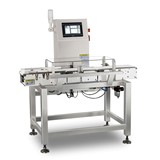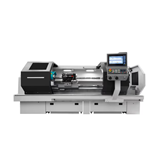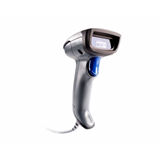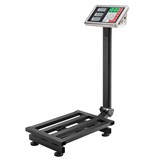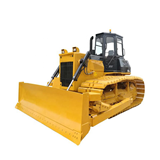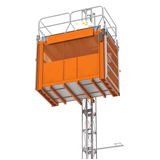Compare bulldozer prices in Australia. Explore types, financing, and expert tips for buying new or used construction equipment.
Key takeaways
- Bulldozer prices in Australia range from $150,000–$1,000,000+, depending on size, power, brand, and features.
- Mini bulldozers start at $50,000, ideal for tight-access work sites and landscaping.
- Mid-size dozers (105–180 hp) typically cost $150,000–$450,000 and suit most civil and construction needs.
- Large bulldozers (200+ hp) can exceed $500,000, often used in mining and major infrastructure.
- Hourly operating costs range from $60–$120, including fuel, maintenance, and wear parts.
- Finance options can start at ~$2,200/month for new dozers under equipment loans or leases.
- Compliance must-haves: ROPS/FOPS cabins, EPA Tier 4/Stage V engine standards, operator licensing (RIIMPO321F).
Introduction: Why buying a bulldozer in Australia needs careful planning
Whether you're clearing land, levelling surfaces, or supporting major earthworks, buying the right bulldozer is crucial for operational efficiency and long-term value. Bulldozers represent a significant investment for civil, construction, mining, and agricultural businesses—so getting it right requires understanding types, pricing, performance specs, maintenance, and regulatory compliance.
This guide is tailored specifically for Australian businesses and owner-operators, arming you with detailed, up-to-date, and localised information to help you make a confident purchasing decision.
Types of Bulldozers in Australia
Choosing the right type of bulldozer is crucial to ensure optimal performance, cost efficiency, and suitability for your specific project. Below are the four main types of bulldozers commonly available and used across Australian construction, mining, and civil works sectors:
Crawler Bulldozers (Track Dozers)
- Description:
- Crawler dozers, often referred to as track dozers, are heavy-duty machines mounted on continuous tracks rather than wheels. The tracks offer superior stability and grip, especially on soft, uneven or rugged terrain.
- Best For:
- Earthmoving, mining, forestry, and large-scale civil construction.
- Advantages:
- High traction on muddy or rough ground
- Excellent pushing power
- Stability on slopes and inclines
Wheel Bulldozers (Tyre Dozers)
- Description:
- Wheel bulldozers use large rubber tyres instead of tracks, offering faster mobility and less ground disturbance. They’re commonly used where surface damage needs to be minimised or quick relocation is necessary.
- Best For:
- Road construction, urban developments, hard-packed surfaces and applications that require frequent movement between sites.
- Advantages:
- Faster travel speed
- Easier to manoeuvre in tight workspaces
- Less surface damage compared to track dozers
Mini or Compact Bulldozers
- Description:
- Mini bulldozers are smaller, more agile machines designed for compact sites. Though not as powerful as full-size dozers, they are perfect for light-duty tasks and indoor or suburban operations.
- Best For:
- Landscaping, residential construction, trench backfilling, and narrow workspaces.
- Advantages:
- Lower upfront cost
- Easier to transport
- Reduced fuel consumption
High-Lift or Specialty Bulldozers
- Description:
- These bulldozers are designed with specialised blade types (e.g., angle blades, U-blades, semi-U blades) and attachments like rippers or winches for highly specific tasks such as land clearing, waste management, or mining.
- Best For:
- Quarrying, mining, heavy-duty clearing, and pushing high volumes of material.
- Advantages:
- Purpose-built for specific, heavy workloads
- Stronger hydraulic systems
- Highly customisable with tools and attachments
Bulldozer prices in Australia
Bulldozer costs vary widely depending on size, brand, age, attachments, and dealership support.
- Mini bulldozers: $150,000–$250,000 new
- Mid-size bulldozers: $250,000–$450,000
- Large bulldozers: $600,000–$1.2 million+
- Used bulldozers (5–10 years old): From $80,000–$400,000 depending on condition and hours
Bulldozer operation and productivity
Key operating features to compare:
- Horsepower & torque: Affects pushing power and fuel efficiency.
- Track type: Wide tracks provide better flotation on soft ground; narrower tracks offer more grip on rocky terrain.
- Blade size & type: Straight, universal (U), semi-U, and angle blades all suit different jobs.
- Hydraulics & controls: Newer models offer joystick control, GPS/telematics, and load-sensing hydraulics.
Maintenance and parts
Proper upkeep extends the life and resale value of your bulldozer. Key components to monitor include:
- Undercarriage (up to 50% of lifecycle cost)
- Hydraulic system: Hoses, seals, and fluids
- Engine filters and cooling systems
- Track tension and roller alignment
- Blade and ripper wear parts
Financing Options in Australia
Purchasing a bulldozer can be costly, but several financing options can help manage cash flow. Here’s a breakdown of your key choices:
1. Chattel Mortgage
- Overview: Own the bulldozer from day one, claim GST and depreciation.
- Ideal for: Businesses seeking ownership and tax benefits.
- Key Points: Typically requires a 10-20% deposit; interest rates vary.
2. Finance Lease
- Overview: Use the bulldozer with the option to buy at the end of the term.
- Ideal for: Businesses wanting lower upfront costs.
- Key Points: Monthly payments are higher than operating leases; may include a balloon payment.
3. Operating Lease
- Overview: Rent the bulldozer without ownership at the end.
- Ideal for: Short-term projects or fluctuating capital needs.
- Key Points: Doesn’t appear on balance sheet; possible maintenance packages.
4. Rent-to-Own
- Overview: Rent with an option to buy later, with part of the rent contributing to the purchase price.
- Ideal for: Businesses unsure about long-term ownership.
- Key Points: Typically higher rental rates but allows evaluation before purchase.
Warranties and After-Sales Support
Understanding warranty terms and after-sales support can save you money and ensure smooth operation. Here’s what to consider:
1. Standard Warranties
- Overview: Typically 1-3 years or 2,000-5,000 hours.
- Key Points: Covers major components, but check for exclusions and maintenance requirements.
2. Extended Coverage
- Overview: Available up to 5 years or 10,000+ hours.
- Ideal for: Businesses seeking long-term peace of mind and reduced repair costs.
- Key Points: May include routine maintenance, but it adds to the overall cost.
3. Support Services
- Overview: Look for dealers offering mobile mechanics and spare parts availability.
- Key Points: Fast service response and training for operators can minimise downtime.
4. Service Packages
- Overview: Includes routine checks, oil changes, and part replacements.
- Key Points: Preventive maintenance can extend the bulldozer’s lifespan and reduce unexpected costs.
Compliance and certification in Australia
When buying or operating a bulldozer in Australia, consider:
- ROPS/FOPS Certification: Mandatory for operator safety in civil and mining projects.
- Engine Emissions Compliance: EPA Tier 4/Stage V engines are required for major government or environmentally sensitive sites.
- Operator licensing: RIIMPO321F competency or White Card needed for most civil construction sites.
- Noise and dust regulations: Particularly important near residential zones or national parks.
Frequently asked questions (FAQs)
1. What’s the lifespan of a bulldozer?
Most dozers last 10,000–15,000 hours with proper maintenance. Large mining dozers may exceed 20,000 hours with undercarriage rebuilds.
2. Is it better to buy new or used?
For consistent daily use or Tier 4 emissions compliance, new machines are best. For infrequent use, used models with low hours and maintenance history can be more cost-effective.
3. What’s the resale value like?
Well-maintained bulldozers retain 40–60% of their original value after 5 years. Brands like Caterpillar and Komatsu hold value best.
4. How do I choose the right size bulldozer?
Match horsepower, blade capacity, and track width to your jobsite conditions and average workloads. Overspecifying wastes fuel and purchase capital.
5. Can bulldozers be hired instead of purchased?
Yes. Dry hire rates in Australia range from $70/hr for small dozers to $250+/hr for large models, depending on location and duration.
Final thoughts: How to buy with confidence
Purchasing a bulldozer is a significant investment. This guide helps you compare machine specs to job requirements, budget for both purchase and ongoing costs, select suppliers with strong warranties and responsive service, and ensure compliance with Australian safety and environmental standards.




